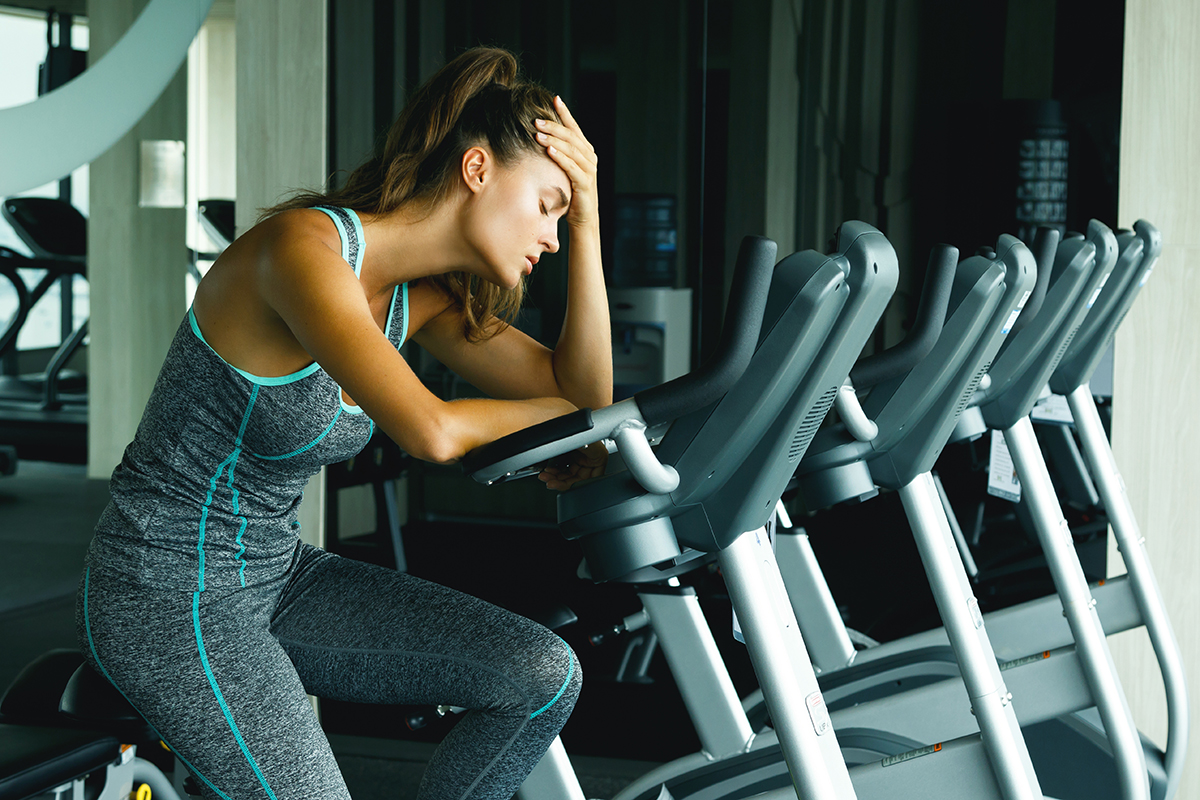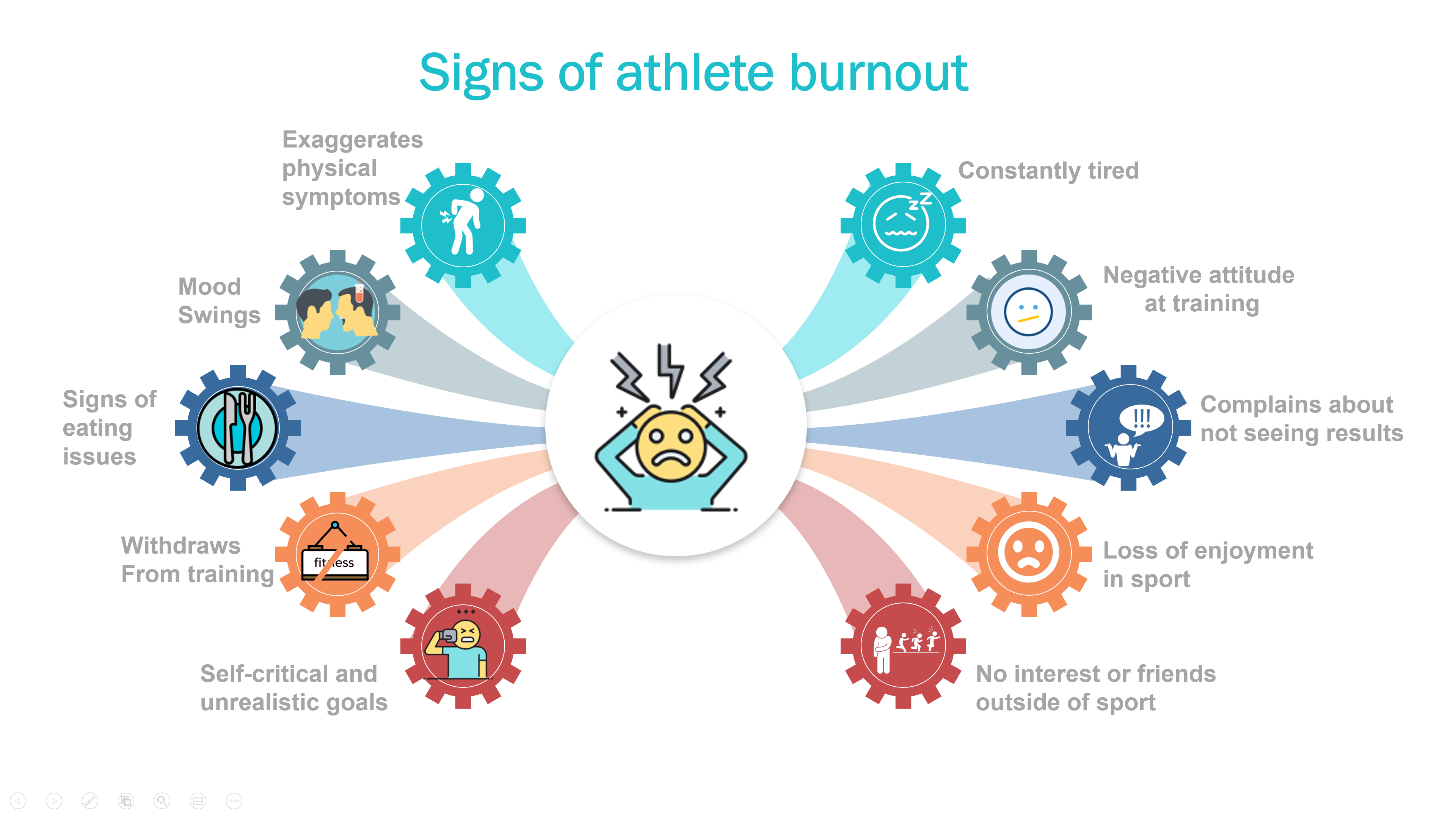Athlete Burnout

Burnout is a state of fatigue or frustration brought about by a devotion to a cause, a way of life, or a relationship that failed to produce the expected reward – Herbert J. Freudenberger
For anyone involved in sport one of the biggest disappointments is seeing a talented athlete fail to fulfill their potential. There are countless stories of promising young stars who seem to have it all in terms of talent, potential and opportunity, but for some reason that may not be immediately obvious, they turn their backs on their chosen sport. Unfortunately there is a reason common to many of those cases, and that is it simply comes down to burnout, where athletes have lost their passion, desire and in many cases, their enjoyment of sport to such an extent that they can no longer continue. It is also something that can affect athletes at the peak of their careers who decide that they need to pursue other opportunities in life to gain fulfillment. Over the years a lot of research has gone into establishing the cause of burnout and according to the article Youth Sports Burnout these include:
- Stress and pressure: Constant pressure to win, train and perform could lead to mental and physical exhaustion
- Entrapment The athlete does not feel they are getting the rewards and level of enjoyment they expected
- Empowerment This is the belief that sports have become too controlling of the athlete’s life
Problem of burnout is widespread
For those who have not fully grasped the extent of the burnout issue, it is worth looking at a study published in The Sport Journal entitled Athlete Burnout: Is the Type of Sport a Factor?. The aim of the study was to determine the level of burnout in female collegiate athletes based on their sport of choice, and one of the most revealing aspects was that burnout was a factor in a variety of sports. It was able to identify which had the greatest risk and the authors stated the following:
Participants were 108 female collegiate athletes at a Division I university in the Southeastern United States. Ages ranged from 19 to 24 (M= 19.8). Burnout was assessed by the Maslach Burnout Inventory (MBI). The instrument is divided into three subscales that include:
- Emotional Exhaustion (EE)
- Depersonalization (DP) and
- Personal Accomplishment (PA)
MBI scores on the subscales were used to classify participants as
- (1) low burnout
- (2) moderate burnout or
- (3) high level of burnout
Results indicated female basketball athletes had the highest level of burnout in the areas of EE (M=27.2) and DP (M=8.5) which are classified as high (1) for EE and moderate (2) for DP. The volleyball players had the lowest sense of PA (M= 37.5) from their sport which correlates with a high (3) level of burnout. Participants on the track and field team experienced the lowest level of EE (M=12.7) which is classified as low burnout (1). Softball experienced the lowest level of DP (M=3.4) which is also classified as low (1), and tennis had the highest sense of PA (M=26.3) which means they were classified as having a low (1) level of burnout.
Taking steps to deal with burnout
The study recommends that student athletes should be better educated in the area of stress and stress management, and that colleges should take measures to reduce the risk of burnout. The importance of this study is underlined by approach taken by the National Sport Academy in The question of hockey burnout– how much is too much? which sees the value in taking active steps to firstly recognize the problem of burnout and also implementing measures to deal with the problem. The academy acknowledges the fact that players don’t experience burnout because they are tired or on the ice too much, but because they get frustrated and dejected by the pressure they are under from a variety of sources. As a result, the National Sport Academy sets out to ensure that young athletes are encouraged to work through their challenges with the support of coaching staff and the article points out:
Our goal is to have your young athlete come to the National Sport Academy program each day enthusiastic and brimming over with energy to play and learn. We work carefully to ensure the love of the game is encouraged with a positive, structured, comfortable and safe environment
Be aware of the symptoms
As with most problems, the first step in being able to deal with them is to identify them, and Johanna Belz helps us do so in her article When enough is enough: uncovering warning signs of burnout in (elite) athletes.
She warns that
It is important to know that the phenomenon of burnout is complex and is associated with imbalances in many areas of the athlete’s life: the sporting context, the physical and mental state, the athlete’s nutrition and his/her private life
She outlines ten symptoms that might identify if an athlete is suffering from burnout.

- Is constantly tired and sleeps much more than usual
- Exhibits an increasing aversion towards the sport by showing a negative attitude in trainings
- Complains about not seeing any results of his/her hard work and is fighting “a losing battle”
- Seems to have lost all enjoyment for the sport and only trains and competes to please others or abide to a professional contract
- Is a “24 hour athlete” and does not seem to have any other interests or friends outside of the sport
- Exaggerates physical symptoms, feigns an injury or drags out the recovery process of an existing injury
- Exhibits mood swings and gets easily frustrated, aggressive or depressed
- Shows signs of disordered eating
- Cheats in trainings or withdraws altogether from certain training activities
- Has unrealistically high self-imposed performance goals and is extremely self-critical
More like a marathon than a sprint
According to Johanna Belz in her article it is important to be aware of the signs of possible burnout and to take steps to correct the problems.
If you identify several of these warning signs in an athlete, address him/her personally and offer emotional and practical support. In a more severe case it is crucial that the athlete receives professional psychological and/or medical help in order to fully recover and regain strength”
She reminds us that being a successful athlete is more like a marathon than a sprint. It requires dedication but more importantly, enjoyment, motivation and energy refueling. She sums up her feelings with a reference to the Dalai Lama, who stated:
If you feel burnout setting in, if you feel demoralized and exhausted, it is best, for the sake of everyone, to withdraw and restore yourself. The point is to have a long-term perspective
Empower coaches through monitoring
One of the keys to achieving this goal is being able to empower coaches with the knowledge that their athletes are at risk of burnout. Being aware of the signs can help a coach intervene and help an athlete overcome those challenges before they reach the level that will result in burnout. One of the best ways to achieve this is through regular monitoring. Our own athlete monitoring system Metrifit helps alert coaches to issues that might be factors in causing burnout. As a result coaches are able to implement measures to ensure the athletes are not under too much stress, are encouraged to take breaks in order to keep mentally and physically fresh, while also ensuring that the sense of enjoyment remains.
Metrifit doesn’t just help with optimizing our Sports Scholarship students’ athletic performance. It assists us in helping them get the balance right between their sporting activities and academic studies. We’re trying to build resourcefulness and character in our students for life, not just the sports field
Richard Deuchrass, Lincoln University, Athletic Performance Manager
Why not have a look at Metrifit Ready to Perform and see how it could help you and your team. To find out more contact us at for a free demo.
Please share this post so others may benefit.
Follow @metrifit

References
Athlete Burnout: Is the Type of Sport a Factor?
Maslach Burnout Inventory (MBI)
The question of hockey burnout– how much is too much?
When enough is enough: uncovering warning signs of burnout in (elite) athletes
































 Previous Post
Previous Post Next Post
Next Post





